The Three P’s
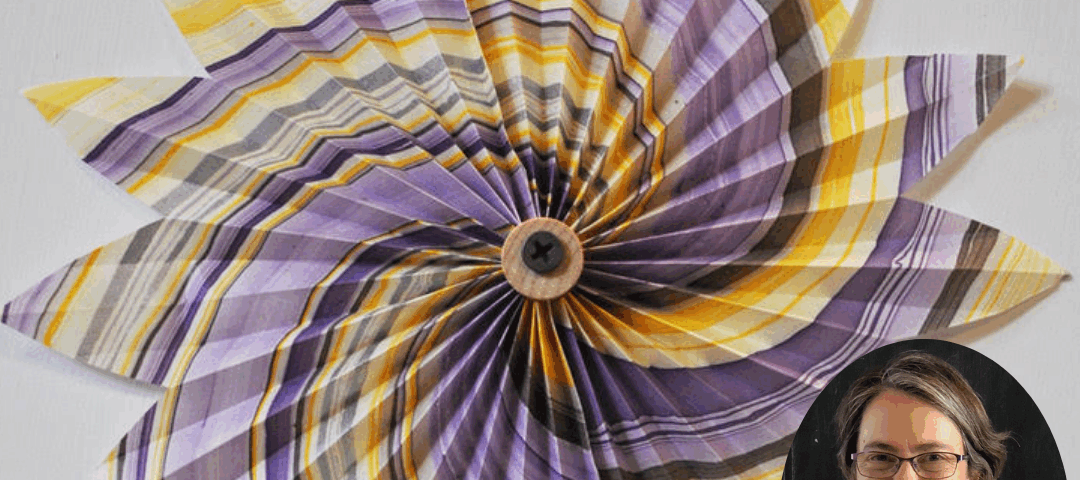
The Sunday Paper #552
April 27, 2025
I’m back from my trip to the Amalfi Coast. My daughter is a great traveling companion and navigated us to all of the hot spots (Positano, Amalfi and Capri). We walked 5-10 miles a day (up and down many steps – it was 76 steps up to our Airbnb), marveled in the blues of the Tyrrhenian Sea and the roads that traversed lemon-filled hillsides, and ate lots of seafood, pizza, pasta, pastries and gelato!
We visited the Amatruda Papermill, which has a long, continuous history in the town of Amalfi (up the main road, past the throngs of tourists). Giuseppe Amatruda gave us a quick tour of the papermaking facilities, where they produce cotton fiber stationery products that are distributed worldwide. This light box (below left) caught my eye in the showroom. I was delighted to see some of the forefathers of papermaking in watermarks: T’sai Lun, Louis-Nicolas Robert; Henry Fourdrinier, Andreas Kufferath, and the mill at Amalfi. The drawing (below right) hangs on a wall in the showroom. I love how it shows all of the steps in the papermaking process.
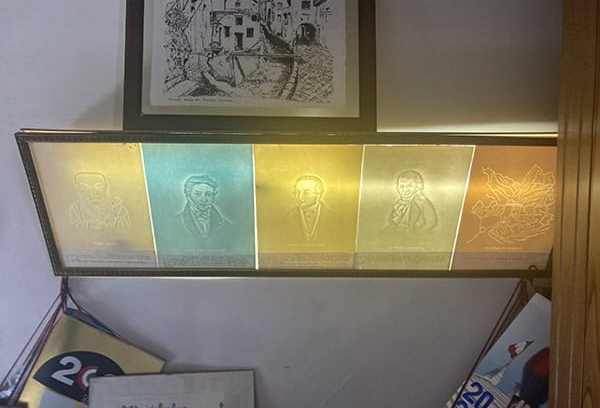 |
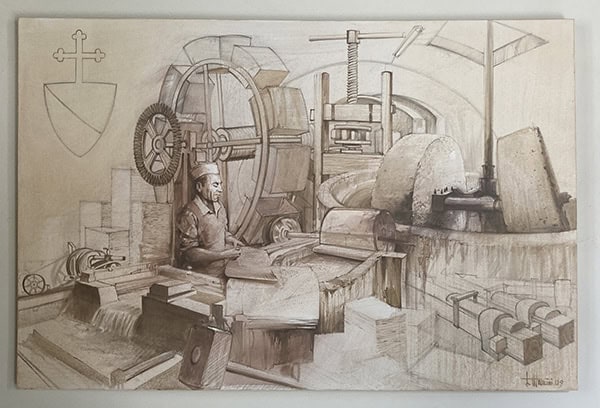 |
——————————————————————————————–––––––
I had the pleasure of speaking with James Ojascastro on Paper Talk, an origamist, papermaker, and botanist, with a Ph.D. in ethnobotany at Washington University in St. Louis in collaboration with the Missouri Botanical Garden. Ojascastro employs a combination of methods – including fiber trait measurements, experimental papermaking, species distribution modeling, and semistructured interviews – to explore the history, biogeography, and conservation of papermaking traditions (especially of Nepal and Vietnam) through a botanical lens. Outside of academia, Ojascastro uses his research background to guide and inform what plants and which processes will yield paper suitable for origami art. Enjoy our conversation!
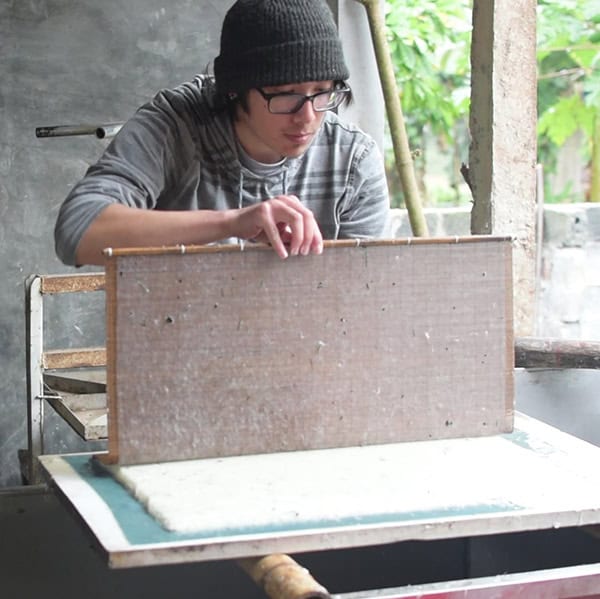
James Ojascastro in Suối Cỏ, Hòa Bình Vietnam, where he was learning papermaking using dướng (paper mulberry; Broussonetia papyrifera) with papermakers belonging to the Mường ethnic group.
——————————————————————————————–––––––
If you’re local, I hope you’ll come out for a fun community crafting event at The Bookworm this Thursday, May 1st, at 5:30pm. We’ll be folding Swirling Flowers, just in time for Mother’s Day! We’re making these in The Paper Year this month, too.
 ——————————————————————————————–––––––
——————————————————————————————–––––––
This is a fascinating video about a quiet corner of Spain, where a factory fuses centuries-old paper machinery with cutting-edge technology to produce some of the world’s most famous rolling papers. The real-life Willy Wonka behind it, Josh Kesselman, tells the story. Watch to the end to hear the reflections on spending a day at the factory by a member of the film crew.
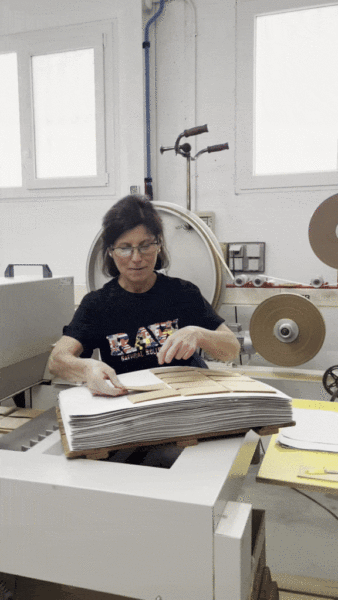 ———————————————————————————————––––––
———————————————————————————————––––––
I mentioned this installation a couple of weeks ago here on the blog: Folding the Future is an exquisite suspended installation of paper stars that is now on view at the Galleria in Dallas (through September). Check out this news clip about Paper For Water’s amazing work.
——————————————————————————————–––––––
Paper Tidbits
- If you’re in NYC, The Magic of Marbling: The Art of Karli Frigge presents selections from the Metropolitan Museum of Art Watson Library’s collection of her work including her sample books, recipe books, instruction guides, and workbooks.
- There’s one spot left in my Taos Paper Retreat. We’ll be weaving paper during the week of July 21st in the land of enchantment. Click here to read all about it and join us!
———————————————————————————————––––––
Author’s Corner
With my new book coming out in November, I thought I’d spend the months leading up to publication sharing a bit about the process of bringing a book to life. Feel free to send me your questions, and I’ll try to address them here.
Today, I’ll tell you a bit about the editing process, which we are just wrapping up. I submitted my manuscript to Storey Publishing in June of 2024, along with some photos and reference materials, and was assigned to my project editor, Kristen Hewitt. The manuscript goes through a series of edits first – when the editor is mainly looking at the text only, and I get to review and respond to the edits at each stage. Next, the publisher flew me out to their offices in North Adams, MA for a photo shoot in October. We shot all of the step-by-step photos for the projects in the book. Storey was able to photograph the actual project examples, as well as the weavings of the 60+ guest artists, on their own. As an example of the level of detail require for each phase in the process, I spent about 10 hours on the phone with my editor one week, preparing for that photo shoot. Design began shortly thereafter, and sometime in the late fall I received “1st Pages” – a PDF and color copies of the book layout. I had a lot of comments at that stage! We went through two more rounds, and I’m submitting my final comments on 3rd pages tomorrow. Phew! I’m pretty much finished with the production side of this project. Promotion of the book will begin soon.
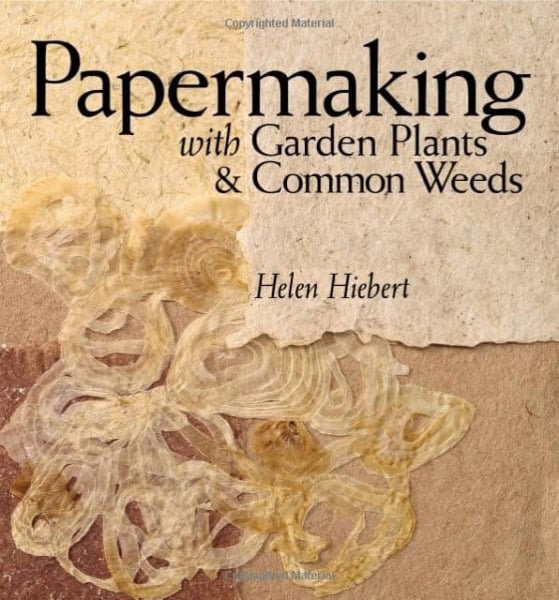 |
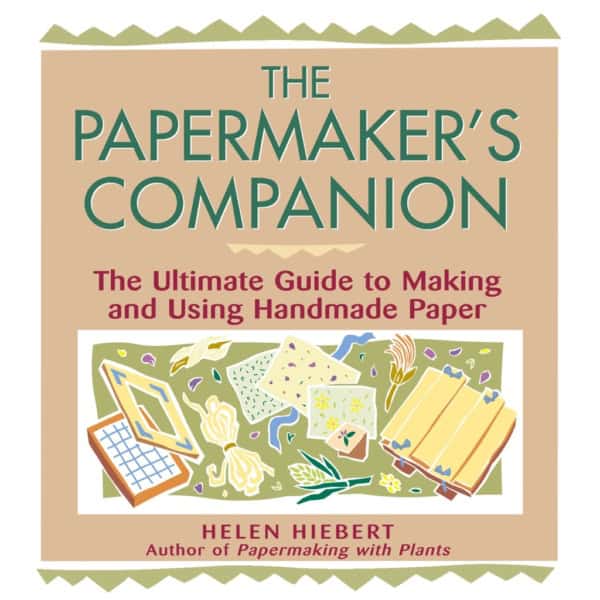 |
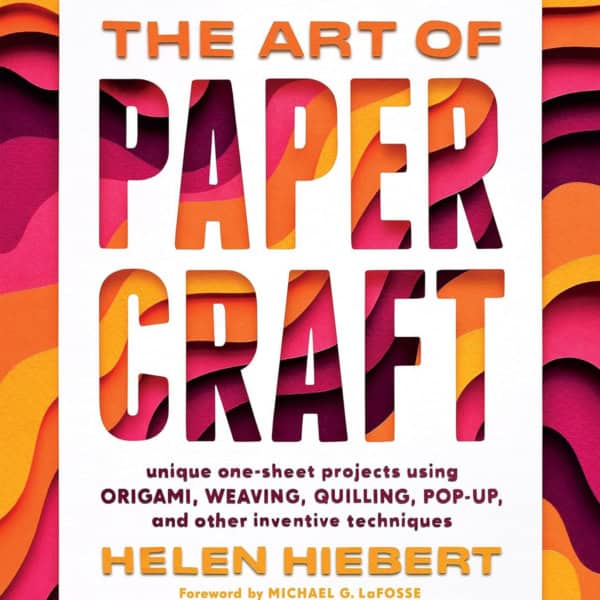 |
 |
———————————————————————————————––––––
If you read this blog regularly, would you consider making a donation to support the research, writing, design and delivery of The Sunday Paper?
Tell 4000+ paper enthusiasts about your work by promoting your business in The Sunday Paper.
———————————————————————————————––––––
SHARE THIS blog post with your paper-loving friends!
I occasionally have affiliate links in these posts – to products that I receive a small commission on if you make a purchase. Thanks for your support!
